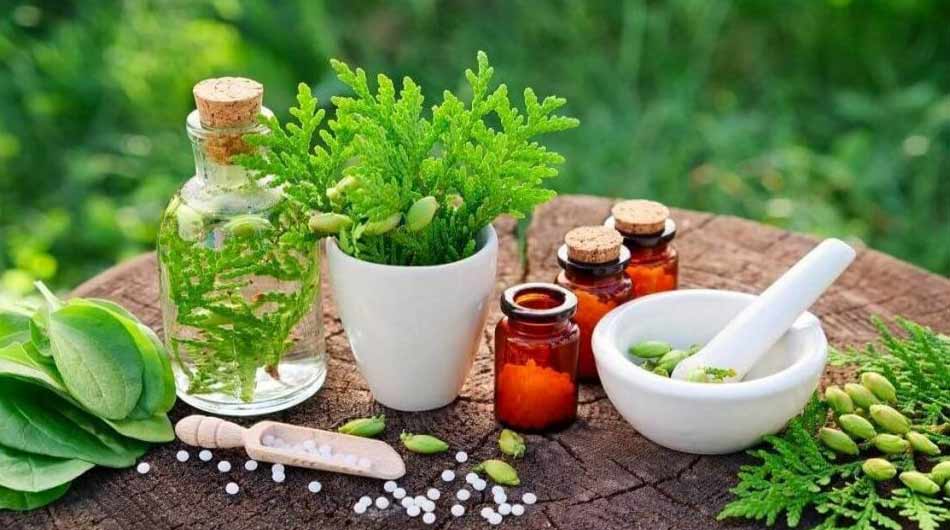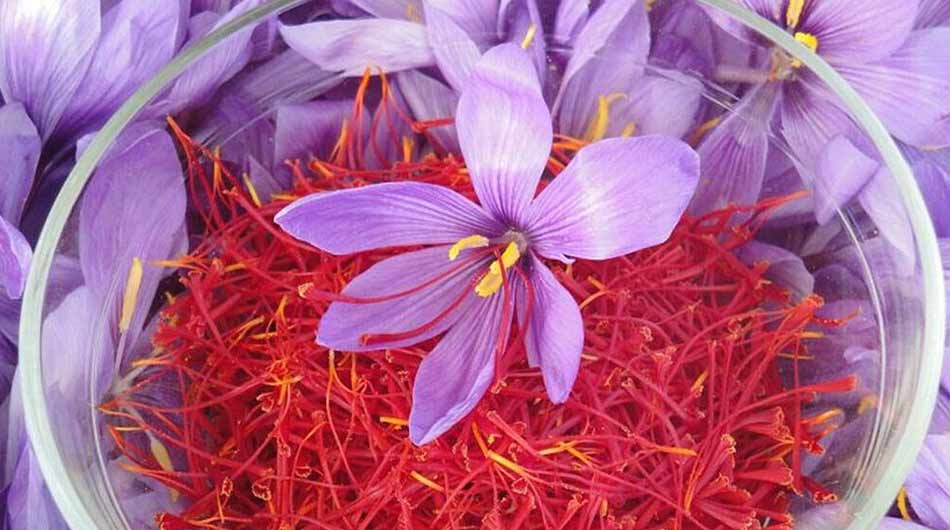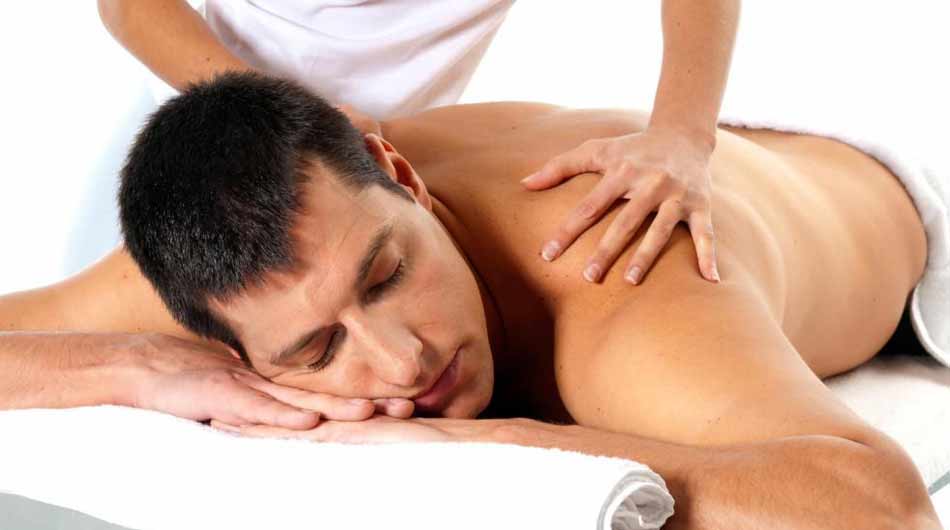Iran Traditional Medicine: Herbal Remedies and Ancient Practices

Iran, with its deep-rooted history and diverse culture, is home to a traditional system of medicine that dates back thousands of years. Known as Persian Traditional Medicine (PTM) or “Tebb-e Sonnati,” this ancient healing practice blends herbal remedies, dietary principles, and holistic care methods passed down through generations. Deeply intertwined with the teachings of prominent scholars such as Avicenna (Ibn Sina), who wrote the famous medical encyclopedia “The Canon of Medicine,” Iran’s traditional medicine has influenced medical practices worldwide. This article explores the key principles of Iran’s traditional medicine, focusing on the use of herbal remedies and ancient practices that continue to thrive alongside modern medical advancements.
 The Foundations of Iranian Traditional Medicine
The Foundations of Iranian Traditional Medicine
Iranian Traditional Medicine is built on a holistic understanding of health and wellness. The core concept revolves around the idea of balancing the body’s “humors” (mizaj), which are blood, phlegm, yellow bile, and black bile. According to PTM, every individual has a unique temperament (mizaj) categorized as either hot or cold, and wet or dry. Health is maintained when these humors are in balance, while imbalances lead to illness. Diagnosis and treatment in PTM focus on restoring this equilibrium through natural means.
Herbal medicine plays a crucial role in this system, where plants, roots, seeds, and oils are used to treat various ailments. These remedies are often tailored to an individual’s specific temperament, making PTM a personalized approach to health care. Dietary adjustments, lifestyle changes, and spiritual practices also play important roles in promoting overall well-being.
The Role of Herbal Remedies
Herbal remedies are at the heart of Persian Traditional Medicine, where plants have been meticulously studied and used for their medicinal properties for centuries. Iran’s rich biodiversity provides access to a wide array of medicinal herbs, many of which have been cataloged in ancient Persian medical texts. Some of the most commonly used herbs in PTM include:
- Saffron (Crocus sativus): Known as “red gold,” saffron is used to treat depression, improve digestion, and reduce menstrual discomfort. It is also a key ingredient in many Persian dishes, demonstrating the link between food and medicine in PTM.
- Ziziphora (Ziziphora tenuior): Often used to treat colds, coughs, and digestive disorders, Ziziphora is a fragrant herb with antimicrobial and anti-inflammatory properties. It is commonly brewed as a tea to relieve respiratory symptoms.
- Rose Water (Golab): Rose water is used both internally and externally for its calming, anti-inflammatory, and skin-healing properties. It is a common remedy for stress, digestive discomfort, and skin irritations.
- Cumin (Cuminum cyminum): Cumin seeds are used for their carminative properties, helping to relieve bloating, gas, and digestive discomfort. They are often included in PTM dietary recommendations to improve digestion and metabolism.
- Borage (Echium amoenum): Known as “Gol Gav Zaban,” borage flowers are brewed as a tea to relieve anxiety, stress, and heart palpitations. Its soothing effects make it one of the most popular herbal remedies in PTM.
These herbs are typically administered as infusions, decoctions, powders, or syrups. The formulation and dosage depend on the patient’s temperament, age, and specific condition, underscoring the individualized nature of PTM.
 Ancient Practices and Treatment Methods
Ancient Practices and Treatment Methods
In addition to herbal remedies, Persian Traditional Medicine encompasses a range of ancient practices designed to maintain health and treat disease. Some of these methods include:
- Cupping (Hijama): Cupping involves creating suction on the skin using heated cups, believed to draw out toxins and stimulate circulation. In PTM, it is used to treat ailments such as headaches, back pain, and high blood pressure. Wet cupping, where small incisions are made to draw out blood, is also practiced.
- Phlebotomy (Fasd): Phlebotomy, or bloodletting, is an ancient practice used in PTM to balance the body’s humors by removing excess blood. It is often recommended for conditions such as hypertension, joint pain, and some skin diseases.
- Leech Therapy (Hirudotherapy): Leech therapy is an ancient treatment used to improve blood flow and treat conditions like varicose veins, arthritis, and some skin disorders. Leech saliva contains enzymes that help reduce inflammation and prevent blood clots, making it a valuable tool in PTM.
- Massage (Dalk): In PTM, massage is used to restore balance to the body’s humors by promoting relaxation, improving circulation, and easing muscle tension. Special oils infused with herbs are often applied during the massage to enhance therapeutic effects.
- Traditional Persian Bathhouses (Hammam): Hammams have historically served as more than just places for bathing; they are centers for detoxification, relaxation, and social interaction. The warm environment of the hammam, combined with massage and herbal treatments, promotes overall health and balances the body’s humors.
The Integration of PTM with Modern Medicine
In recent years, there has been a resurgence of interest in Persian Traditional Medicine, both in Iran and globally. The growing awareness of natural and holistic treatments has led to more research and documentation of PTM’s effectiveness. Many Iranians continue to rely on traditional herbal remedies alongside modern medicine, and PTM is now officially recognized in the country’s healthcare system.
Educational institutions in Iran offer courses and degrees in traditional medicine, ensuring that ancient knowledge is preserved while being critically examined and integrated with contemporary scientific practices. PTM practitioners work in conjunction with conventional doctors to offer comprehensive healthcare options that cater to both the physical and spiritual needs of patients.
Tags:Adventure holidays, Best time to travel to iran, best tour operator iran, Crocus sativus, Cultural sites of Iran, Culture of Iranian People, Economy of Travel, Holiday in Iran, Iran Architectural, iran attractions, Iran country, Iran cultural, iran destinations, Iran enriching experience, Iran sightseeing tours, iran Solo trip, iran tour, Iran tour packages, iran tourist attractions, Iran travel agency, iran travel expenses, Iran Travel Guide, Iran Travel Tips, Iranian culture, Iranian Hospitality, Iran’s traditional medicine, Massage (Dalk), must-visit Iran, persia tour, Persian Traditional Medicine (PTM), Rose Water, Saffron, Surfing In Iran, top tourist destinations, travel to iran, Traveling to Iran, travelling to iran, trip to iran, vacation packages, visit iran, درناگشت


 The Foundations of Iranian Traditional Medicine
The Foundations of Iranian Traditional Medicine Ancient Practices and Treatment Methods
Ancient Practices and Treatment Methods
SEO izleme SEO uzmanları ile çalışmak, Google sıralamalarında hızlı bir yükseliş sağladı. https://www.royalelektrik.com/huseyinli-elektrikci/
DMCA yasal süreç SEO çalışmaları sayesinde web sitemizin trafiği katlandı. https://www.royalelektrik.com/beyoglu-cihangir-elektrikci/
Real Estate I am truly thankful to the owner of this web site who has shared this fantastic piece of writing at at this place.
of course like your website but you have to check the spelling on several of your posts A number of them are rife with spelling issues and I in finding it very troublesome to inform the reality on the other hand I will certainly come back again
I do not even know how I ended up here but I thought this post was great I do not know who you are but certainly youre going to a famous blogger if you are not already Cheers
Fantastic site A lot of helpful info here Im sending it to some buddies ans additionally sharing in delicious And naturally thanks on your sweat
Baddiehubs There is definately a lot to find out about this subject. I like all the points you made
helloI really like your writing so a lot share we keep up a correspondence extra approximately your post on AOL I need an expert in this house to unravel my problem May be that is you Taking a look ahead to see you
helloI really like your writing so a lot share we keep up a correspondence extra approximately your post on AOL I need an expert in this house to unravel my problem May be that is you Taking a look ahead to see you
I was suggested this web site by my cousin Im not sure whether this post is written by him as no one else know such detailed about my trouble You are incredible Thanks
Your blog is a treasure trove of valuable insights and thought-provoking commentary. Your dedication to your craft is evident in every word you write. Keep up the fantastic work!
you are truly a just right webmaster The site loading speed is incredible It kind of feels that youre doing any distinctive trick In addition The contents are masterwork you have done a great activity in this matter
helloI really like your writing so a lot share we keep up a correspondence extra approximately your post on AOL I need an expert in this house to unravel my problem May be that is you Taking a look ahead to see you
Hello i think that i saw you visited my weblog so i came to Return the favore Im trying to find things to improve my web siteI suppose its ok to use some of your ideas
I loved as much as youll receive carried out right here The sketch is attractive your authored material stylish nonetheless you command get bought an nervousness over that you wish be delivering the following unwell unquestionably come more formerly again as exactly the same nearly a lot often inside case you shield this hike
Wow amazing blog layout How long have you been blogging for you made blogging look easy The overall look of your web site is magnificent as well as the content
What i dont understood is in reality how youre now not really a lot more smartlyfavored than you might be now Youre very intelligent You understand therefore significantly in terms of this topic produced me personally believe it from a lot of numerous angles Its like women and men are not interested except it is one thing to accomplish with Woman gaga Your own stuffs outstanding Always care for it up
I do not even know how I ended up here but I thought this post was great I dont know who you are but definitely youre going to a famous blogger if you arent already Cheers
ABS Pipes : Known for toughness and impact resistance, ABS pipes are commonly used in drainage systems. ElitePipe Factory in Iraq produces durable ABS pipes.
قنوات EMT يقدم مصنع إيليت بايب في العراق قنوات EMT المعروفة بقوتها ومرونتها الفائقة، وهي مثالية لحماية الأسلاك الكهربائية في التطبيقات الصناعية والتجارية المختلفة. توفر قنوات EMT (الأنابيب المعدنية الكهربائية) الخاصة بنا حلاً موثوقًا لحماية الكابلات من التلف الميكانيكي والعوامل البيئية، في حين أن تصميمها الخفيف يسهل عملية التركيب والتعامل. كأحد المصانع الرائدة في العراق، يضمن مصنع إيليت بايب أن جميع قنوات EMT لدينا تلتزم بمعايير الجودة الصارمة، مما يجعلنا خيارًا مفضلاً لحلول حماية الكهرباء. لمزيد من التفاصيل، يرجى زيارة elitepipeiraq.com.
أنابيب الحديد الدكتايل في العراق بصفتها واحدة من المصادر الأكثر موثوقية لأنابيب الحديد الدكتايل في العراق، يكرس مصنع إيليت بايب جهوده لتوفير منتجات عالية الجودة. تُصمم أنابيب الحديد الدكتايل لدينا لتوفير قوة ومرونة فائقة، مما يجعلها مناسبة للتطبيقات الصعبة مثل توزيع المياه وأنظمة الصرف الصحي. بفضل تقنيات التصنيع المتقدمة والمراقبة الدقيقة للجودة، يضمن مصنع إيليت بايب أن يلبي كل أنبوب أعلى معايير الأداء والمتانة. ثق بمصنع إيليت بايب لاحتياجاتك من أنابيب الحديد الدكتايل وزيارة موقعنا الإلكتروني على ElitePipe Iraq.
Bu soba, içindeki yakıtın yanmasıyla oluşan ısıyı doğrudan çevresine yayar ve aynı zamanda suyun ısınmasını sağlar.
I loved as much as youll receive carried out right here The sketch is attractive your authored material stylish nonetheless you command get bought an nervousness over that you wish be delivering the following unwell unquestionably come more formerly again as exactly the same nearly a lot often inside case you shield this hike
Somebody essentially lend a hand to make significantly posts I might state That is the very first time I frequented your web page and up to now I surprised with the research you made to create this particular put up amazing Excellent job
Technoob Awesome! Its genuinely remarkable post, I have got much clear idea regarding from this post . Technoob
dodb buzz I am truly thankful to the owner of this web site who has shared this fantastic piece of writing at at this place.
GlobalBllog I just like the helpful information you provide in your articles
Thinker Pedia I truly appreciate your technique of writing a blog. I added it to my bookmark site list and will
Aroma Sensei Great information shared.. really enjoyed reading this post thank you author for sharing this post .. appreciated
Jinx Manga This was beautiful Admin. Thank you for your reflections.
Isla Moon This is my first time pay a quick visit at here and i am really happy to read everthing at one place
gluco6 reviews : https://gluco6reviews.usaloves.com/
gluco6 reviews : https://gluco6reviews.usaloves.com/
gluco6 reviews : https://gluco6reviews.usaloves.com/
gluco6 reviews : https://gluco6reviews.usaloves.com/
gluco6 reviews : https://gluco6reviews.usaloves.com/
gluco6 reviews : https://gluco6reviews.usaloves.com/
gluco6 reviews : https://gluco6reviews.usaloves.com/
gluco6 reviews : https://gluco6reviews.usaloves.com/
gluco6 reviews : https://gluco6reviews.usaloves.com/
gluco6 reviews : https://gluco6reviews.usaloves.com/
gluco6 reviews : https://gluco6reviews.usaloves.com/
gluco6 reviews : https://gluco6reviews.usaloves.com/
gluco6 reviews : https://gluco6reviews.usaloves.com/
gluco6 reviews : https://gluco6reviews.usaloves.com/
gluco6 reviews : https://gluco6reviews.usaloves.com/
gluco6 reviews : https://gluco6reviews.usaloves.com/
gluco6 reviews : https://gluco6reviews.usaloves.com/
gluco6 reviews : https://gluco6reviews.usaloves.com/
gluco6 reviews : https://gluco6reviews.usaloves.com/
gluco6 reviews : https://gluco6reviews.usaloves.com/
gluco6 reviews : https://gluco6reviews.usaloves.com/
gluco6 reviews : https://gluco6reviews.usaloves.com/
gluco6 reviews : https://gluco6reviews.usaloves.com/
gluco6 reviews : https://gluco6reviews.usaloves.com/
gluco6 reviews : https://gluco6reviews.usaloves.com/
gluco6 reviews : https://gluco6reviews.usaloves.com/
gluco6 reviews : https://gluco6reviews.usaloves.com/
gluco6 reviews : https://gluco6reviews.usaloves.com/
gluco6 reviews : https://gluco6reviews.usaloves.com/
gluco6 reviews : https://gluco6reviews.usaloves.com/
gluco6 reviews : https://gluco6reviews.usaloves.com/
gluco6 reviews : https://gluco6reviews.usaloves.com/
gluco6 reviews : https://gluco6reviews.usaloves.com/
gluco6 reviews : https://gluco6reviews.usaloves.com/
gluco6 reviews : https://gluco6reviews.usaloves.com/
gluco6 reviews : https://gluco6reviews.usaloves.com/
gluco6 reviews : https://gluco6reviews.usaloves.com/
gluco6 reviews : https://gluco6reviews.usaloves.com/
gluco6 reviews : https://gluco6reviews.usaloves.com/
gluco6 reviews : https://gluco6reviews.usaloves.com/
gluco6 reviews : https://gluco6reviews.usaloves.com/
gluco6 reviews : https://gluco6reviews.usaloves.com/
gluco6 reviews : https://gluco6reviews.usaloves.com/
gluco6 reviews : https://gluco6reviews.usaloves.com/
gluco6 reviews : https://gluco6reviews.usaloves.com/
gluco6 reviews : https://gluco6reviews.usaloves.com/
gluco6 reviews : https://gluco6reviews.usaloves.com/
gluco6 reviews : https://gluco6reviews.usaloves.com/
gluco6 reviews : https://gluco6reviews.usaloves.com/
gluco6 reviews : https://gluco6reviews.usaloves.com/
gluco6 reviews : https://gluco6reviews.usaloves.com/
gluco6 reviews : https://gluco6reviews.usaloves.com/
gluco6 reviews : https://gluco6reviews.usaloves.com/
gluco6 reviews : https://gluco6reviews.usaloves.com/
denticore scam: denticore scam
Gluco6 scam: Gluco6 scam
Gluco Extend scam: Gluco Extend scam
Quietum Plus scam: Quietum Plus scam
Is Cacao Bliss a scam or is it a legitimate product?: Cacao Bliss scam
Is CARBOFIRE a scam, or is it a legitimate product?: carbofire scam
is DentiCore a scam, or is it a legitimate product that could help improve your oral health?: DentiCore scam
Is SonoVive a scam or a legitimate supplement?: sonovive scam
Is Cacao Bliss a scam or is it a legitimate product?: Cacao Bliss scam
is DentiCore a scam, or is it a legitimate product that could help improve your oral health?: DentiCore scam
Is CARBOFIRE a scam, or is it a legitimate product?: carbofire scam
Is ProvaDent a Scam or Legit?: provadent scam
Is ProvaDent a Scam or Legit?: provadent scam
Is Pineal Pure a scam or is it legitimate?: pineal pure scam
Is CARBOFIRE a scam, or is it a legitimate product?: carbofire scam
Is MitoThrive a scam, or is it legitimate?: mitothrive scam
Is Pineal Pure a scam or is it legitimate?: pineal pure scam
Is Dentavim a legitimate product, or is it just another overhyped supplement?: Dentavim scam
Is Dentavim a legitimate product, or is it just another overhyped supplement?: Dentavim scam
is DentiCore a scam, or is it a legitimate product that could help improve your oral health?: DentiCore scam
Is Pineal Pure a scam or is it legitimate?: pineal pure scam
Is Pineal Pure a scam or is it legitimate?: pineal pure scam
Вечерние развлечения Парижа поражает своим богатством. От роскошных кабаре до камерных музыкальных заведений – развлечения найдутся для всех.
Архитектура Парижа демонстрирует многочисленные исторические эпохи. От древних построек до новейших строительных проектов – город поражает многогранностью.
Зеленые зоны дают отличный шанс передохнуть от насыщенной программы. Булонский лес привлекают среди посетителей.
Река Сена играет центральную роль в панораме города. Поездки по реке предлагают особенный перспективу на знакомые достопримечательности.
Мосты Парижа являют собой подлинные шедевры. Всякое сооружение имеет свою собственную судьбу.
Культурные обычаи и нюансы достойны понимания и уважения. Осведомленность основных норм этикета поможет комфортнее чувствовать себя.
Съемка в Париже – это отдельный вид искусства. Каждый уголок города предлагает захватывающие перспективы для создания прекрасных кадров.
Полную информацию о любой детали путешествия в Париж вы получите на сайте [url=https://bonjourfrancia.ru]bonjourfrancia.ru[/url]. Этот ресурс станет вашим надежным гидом в планировании незабываемого французского путешествия.
[url=http://www.vindexexpo.ru/vdnh-hram-sovetskoj-mechty-zerkalo-vremeni/]санатории кисловодска с лечением[/url]
Автоадвокаты СПб:
✔ Возврат водительских прав
✔ Споры по ОСАГО и выплатам компенсаций
✔ Защита при лишении прав
География: все районы СПб
Стаж работы: 8+ лет
https://avtoyuristsanktpeterburg.ru/
Думаете посетить уникальный российский регион, окруженный территорией Европейского союза? Калининград – это изумительное место, где смешивается русская культура с балтийским наследием. В данном регионе вас ждут старинные замки, потрясающие парки и милые европейские улочки.
Калининградская область впечатляет своим многообразием интересных объектов. От популярного Кёнигсбергского собора до таинственного форта №5, от солнечных пляжей Светлогорска до старинных стен Калининграда – каждый откроет здесь что-то интересное для себя.
Подробную информацию о подготовке поездки, рекомендуемых маршрутах и достойных внимания местах вы можете получить на [url=http://acontinents.nnov.org/acontinentsss/arhitekturnye_schedevry_kaliningradskoy_oblasti__ot_starinnyh_zdaniy_do_sovremennyh_postroek.html]http://acontinents.nnov.org/acontinentsss/arhitekturnye_schedevry_kaliningradskoy_oblasti__ot_starinnyh_zdaniy_do_sovremennyh_postroek.html[/url]. Опытные путешественники рассказывают своими рекомендациями и ассистируют подготовить великолепное путешествие в этот уникальный российский регион.
Намереваетесь посетить уникальный российский регион, окруженный территорией Европейского союза? Калининград – это восхитительное место, где встречается русская культура с балтийским наследием. В этом городе вас ждут готические замки, потрясающие парки и уютные европейские улочки.
Калининградская область завораживает своим многообразием интересных объектов. От известного Кёнигсбергского собора до загадочного форта №5, от золотистых пляжей Светлогорска до старинных стен Калининграда – каждый найдет здесь что-то захватывающее для себя.
Ценные советы о планировании поездки, рекомендуемых маршрутах и достойных внимания местах вы можете получить на [url=https://www.liveinternet.ru/users/acontinent/post511302878/]https://www.liveinternet.ru/users/acontinent/post511302878/[/url]. Опытные путешественники дают своими впечатлениями и содействуют устроить незабываемое путешествие в этот неповторимый российский регион.
Barınaktan, sokaktan ya da gönüllülerden sahiplendirilen sevimli dostlarımız sahipleniyorum.com’da sizi bekliyor. Hayvanseverler için hazırlanan modern arayüzü ve hızlı filtreleme seçenekleriyle aradığınız dostu kolayca bulun.